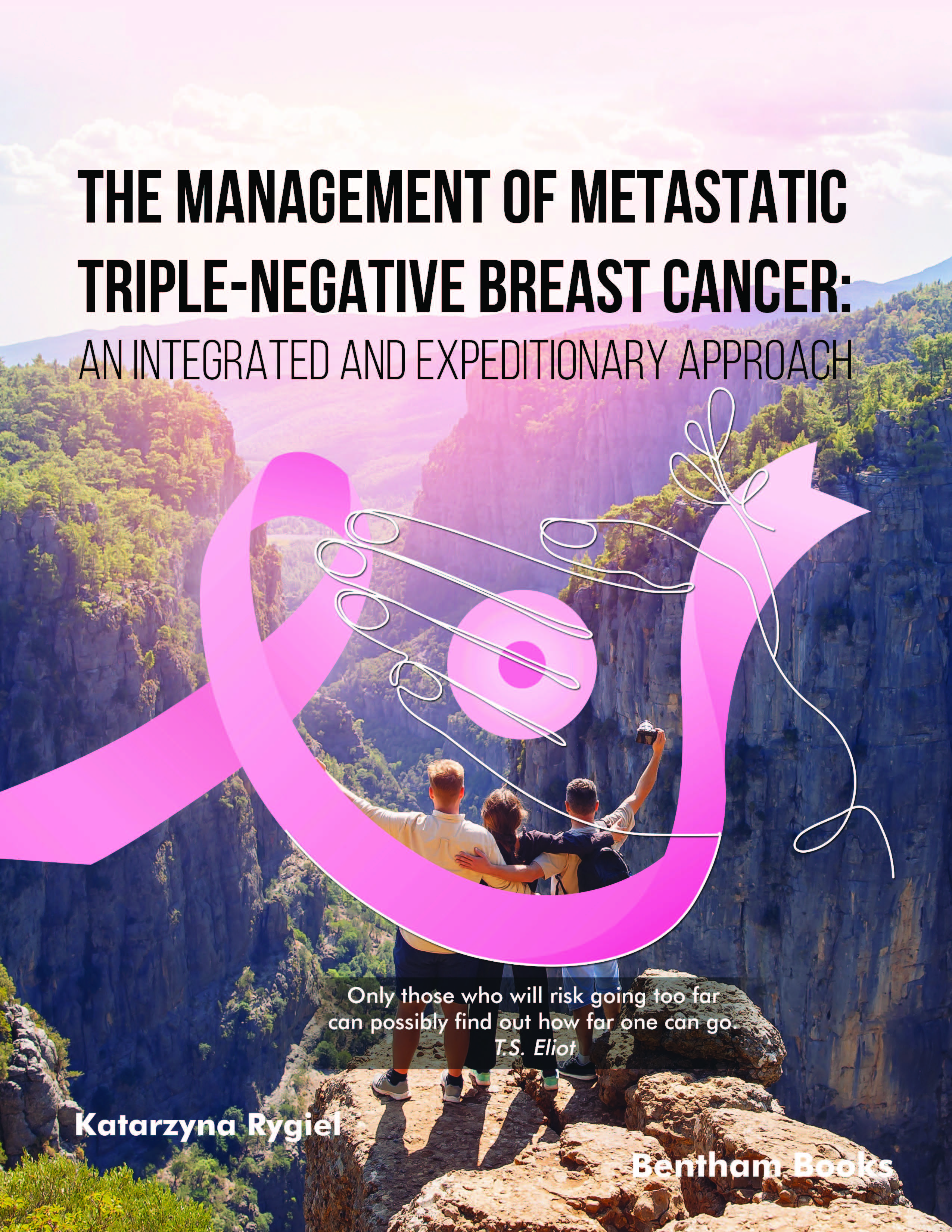Nowadays, several women with breast cancer (BC) experience positive therapeutic effects and longer survival. However, certain BC subtypes, like triple-negative breast cancer (TNBC) (in the advanced or metastatic stages) remain the major challenge, because of their aggressive behavior, heterogeneity, high recurrence rates, and resistance to traditional therapies. One important reason why TNBC is so difficult to treat is the lack of targetable receptors (such as estrogen receptor (ER), progesterone receptor (PR), and human epidermal growth factor receptor 2 (HER 2)) on the malignant cell’s surface. This feature, together with a propensity for visceral metastases, presents an unmet medical need.
Although the latest research advances in the BC area have resulted in some innovative therapeutic strategies, many of these novel agents have certain toxic effects, and therefore, careful patient selection, monitoring, and prompt treatment of side effects are required. To yield the benefits of new targeted therapies and to counteract their possible toxicities, both sides that are involved in TNBC care, the healthcare professionals and the patients must be well-prepared for long-term cooperation. Such collaborative efforts demand clinician’s updated knowledge about novel therapeutic strategies and clinical trials in the TNBC area. Also, building professional relationships and communication networks with the patients and their caregivers is very important.
At the same time, the patients themselves need to be adequately informed about some basic principles of TNBC, and they should be personally engaged in the therapeutic course of their disease. For instance, the patients need to learn some skills, such as self-observation and self-care, as well as precise communication with the treatment team members. It appears that pharmaceutical care would be a perfect avenue to accomplish the objectives of safe and effective BC care. However, in the reality of typical, busy oncology centers, these necessities are often difficult to fulfill, due to various reasons (
e.g., lack of time, incentives, and organizational support). In the face of these demands, the book titled: ”
The Management of Metastatic Triple-Negative Breast Cancer: An Integrated and Expeditionary Approach” offers a possible solution.
One of the remarkable features of this book is a reader-friendly presentation of topics in form of the well-structured graphs and tables, which contain helpful, multidisciplinary information. A brought thematic spectrum of this book, contained in separate chapters (organized in the form of two, conveniently overlapping parts), provides a clear, comprehensive, and updated knowledge base for medical care teams in Breast Care Units and other oncology settings. It should be noted that this is another book of this author, in which she responds to the challenge of combining the efforts of medical care teams members, with various areas of expertise (
e.g., physicians, pharmacists, diagnosticians, physical therapists, psychologists, and nurses) to work together, to achieve improvement in health condition and the quality of life of the patients with TNBC, and other subtypes of BC.
The author very insightfully analyses many therapeutic aspects of BC and emphasizes the crucial role of education and overcoming barriers of fear or uncertainty. Moreover, she highlights the necessity of embarking on a difficult path that leads to accomplishing beneficial effects (not only in terms of clinical parameters but also in the psychological domains of a patient’s life). This is particularly important since in patients with TNBC, receiving multiple medications is often related to an adverse phenomenon of polypharmacy, often observed in multi-morbidity, associated with poly-therapy. Therefore, limiting the adverse effects of recommended therapies to a necessary minimum would be extremely beneficial (
e.g., with regard to many new targeted therapies). This demanding task is primarily addressed to both physicians and pharmacists, who should create two integrated “pillars” of patient management. In addition, this book promotes the concept of patient-centered, personalized care. It encourages clinicians to be open-minded, adequately trained, and ready to constantly exchange their expertise to serve the afflicted patients with BC to improve their outcomes.
Finally, this book provides many useful, easily accessible tools to attain these goals. It would be very important for medical and pharmacy students or residents to be introduced to these integrative concepts of care from the early stages of their professional education. As an academic teacher with many years of experience, I would definitely recommend this book as a practical reference in many educational environments, for teaching multidisciplinary teams of medical professionals and students, as well as patient advocates, caregivers, and women suffering from BC.
Lucyna Bułaś
Department of Pharmaceutical Technology
Faculty of Pharmaceutical Sciences in Sosnowiec
Kasztanowa 3, 41-200 Sosnowiec
Poland

